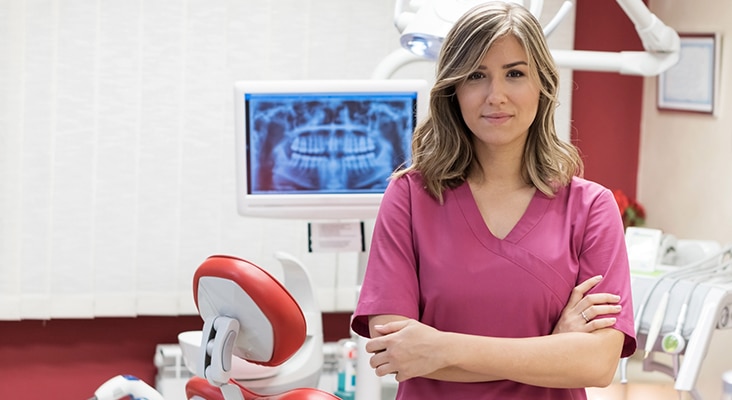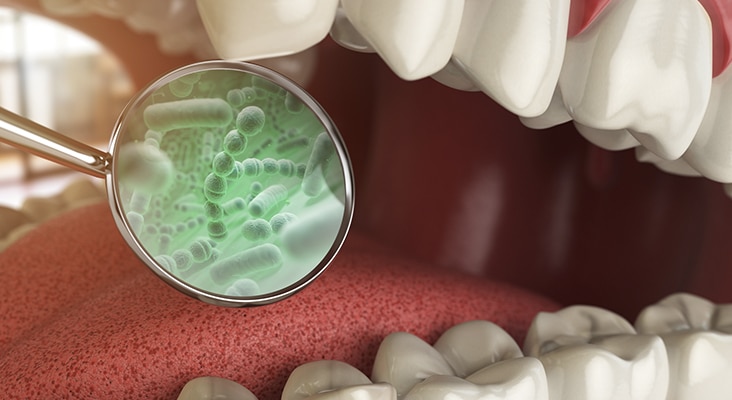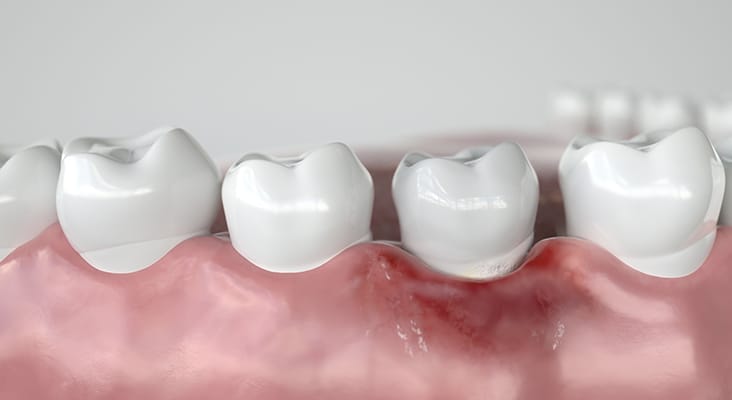Biofilm Management With Air Polishing
Professional removal of biofilm is an integral aspect of nonsurgical periodontal therapy and the preventive services provided by oral health professionals.

Professional removal of biofilm is an integral aspect of nonsurgical periodontal therapy and the preventive services provided by oral health professionals. Goals of periodontal debridement include removal of calculus and biofilm, elimination of inflammation, removal of infection, and maintenance of a healthy periodontium. Traditionally, biofilm management has been professionally disrupted using ultrasonic instrumentation, hand instrumentation, and rubber cup polishing. The use of air polishing can also provide benefits to both patients and clinicians.
Photo Credit: BakiBG / iStock / Getty Images Plus

Supragingival Air Polishing
Conventional supragingival air polishing uses a combination of air, water, and abrasive powders. Indications for use include removal of biofilm and stain on enamel surfaces, and cleaning of pits and fissures prior to sealant placement. Supragingival air polishing is technique sensitive but offers an alternative to traditional rubber cup polishing for removal of biofilm and extrinsic stain.
Photo Credit: Bet_Noire / iStock / Getty Images Plus

Sodium Bicarbonate
The traditional supragingival air polishing powder is sodium bicarbonate. Sodium bicarbonate is nontoxic and water soluble, thus making it ideal for intraoral use. Aluminum trihydroxide is an alternative type of low abrasive powder that may also be used for supragingival air polishing, but it is not water soluble. Advantages include safe and efficient removal of extrinsic plaque and stains on intact enamel surfaces. Research also shows that sodium bicarbonate air polishing is approximately one-third less time consuming when compared with hand instrumentation and rubber cup polishing. Disadvantages include salty taste, large particle size, aerosol production, unpleasant stinging sensation, potential for soft tissue trauma, and contraindicated for use on root surfaces, demineralized surfaces, and restorative materials. In addition, sodium bicarbonate air polishing can lead to erosion or dulling effects of filling materials.
Photo Credit: alexander ruiz / iStock / Getty Images Plus

Subgingival Air Polishing
New technology has expanded the traditional method of biofilm and stain removal from only supragingival removal to include subgingival surfaces. When used effectively, subgingival air polishing can safely remove biofilm from enamel and root surfaces, and within the periodontal pocket. New technologies have now been created for subgingival polishing with glycine powder as the main polishing agent. Glycine is a nonessential amino acid and the substance is significantly smaller in particle size when compared to sodium bicarbonate powders.
Photo Credit: CreVis2 / iStock / Getty Images Plus

Glycine Air Polishing
Glycine powder air polishing is safe and causes decreased gingival trauma when compared with hand instrumentation and sodium bicarbonate powder. Subgingival air polishing uses a low abrasive glycine powder, which is 80% less abrasive than sodium bicarbonate. Glycine air polishing powder can also be safely used on restorative materials, dental implants, and debridement of periodontal pockets up to 5 mm. In one study, glycine powder resulted in improved access to pits and fissures, demonstrated rapid removal of biofilm and debris, and indicated no recognizable change in plastic brackets when tested. Research evaluating the effect of glycine powder used on enamel, composite, and glass ionomer cement found a reduced amount of change in surface characterization compared to certain sodium bicarbonate and aluminum trihydroxide powders. Patients also tolerated the sweet taste compared to the salt-based sodium bicarbonate powder.
Photo Credit: Casimiro / iStock / Getty Images Plus

Necessary Supplies
Several companies make air polishing devices that offer subgingival technologies. One design includes a combination of a piezoelectric ultrasonic scaler with a supra- and subgingival air polisher. This unit offers the clinician flexibility in technique by allowing for both supra- and subgingival air polishing for a variety of patient needs. Another design is a portable hand unit that can be interchangeable and attached to the air compression lines of a dental unit. When using a standard nozzle, both of these units are used for supragingival biofilm removal and subgingival biofilm removal in normal sulci or shallow pockets up to 4 mm. The units include a site-specific periodontal nozzle tip for reaching periodontal pockets greater than 4 mm.
Photo Credit: jovan_epn / iStock / Getty Images Plus

Appropriate Progression
Clinicians skilled in the use of glycine powder air polishing recommend air polishing first, followed by periodontal instrumentation. Benefits of this approach include increased time efficiency, decreased clinician fatigue, better patient acceptance, and enhanced efficacy. Subgingival air polishing with glycine powder has been shown to be more effective in removing subgingival biofilm vs hand instrumentation, which leads to increased patient comfort. With the goals of periodontal debridement at the forefront of dental hygiene care, the use of subgingival air polishing technology can assist in achieving better patient outcomes by providing alternative options to achieving the goals of periodontal therapy.

